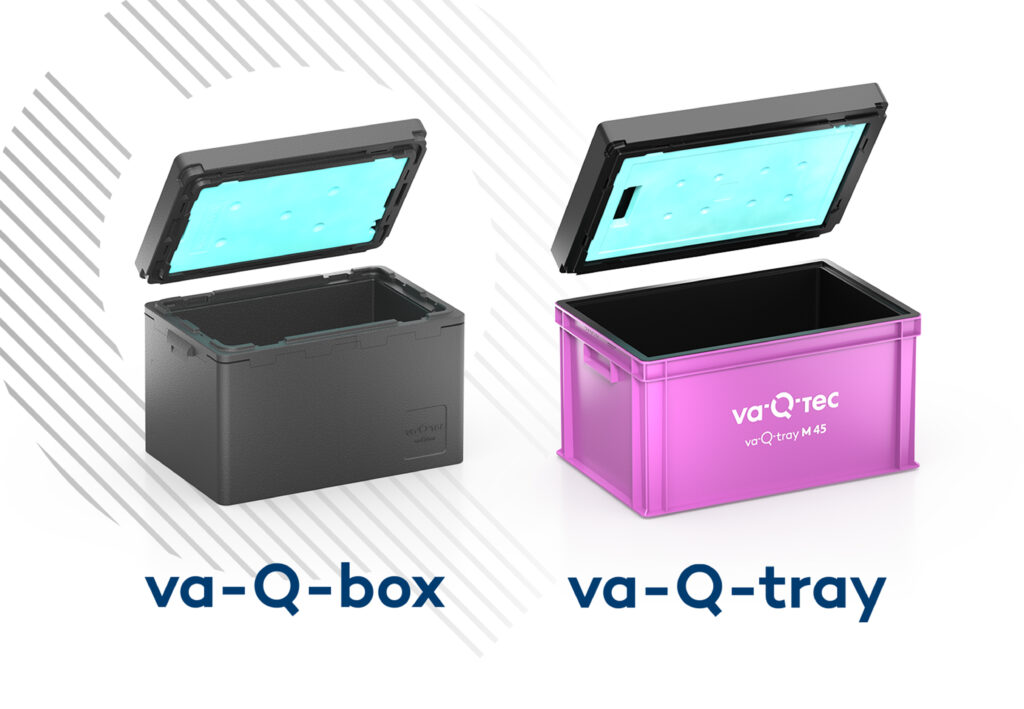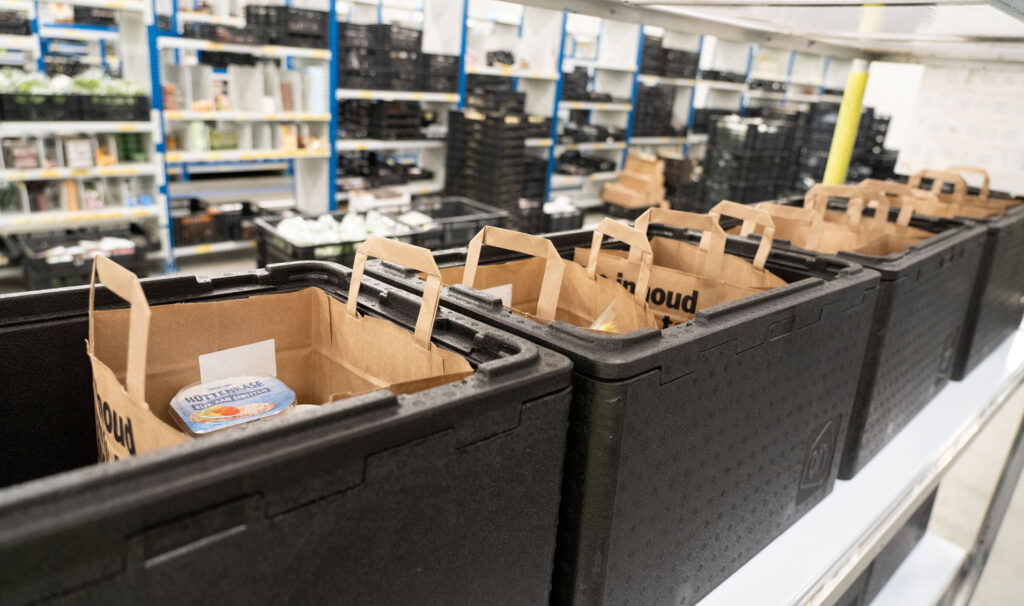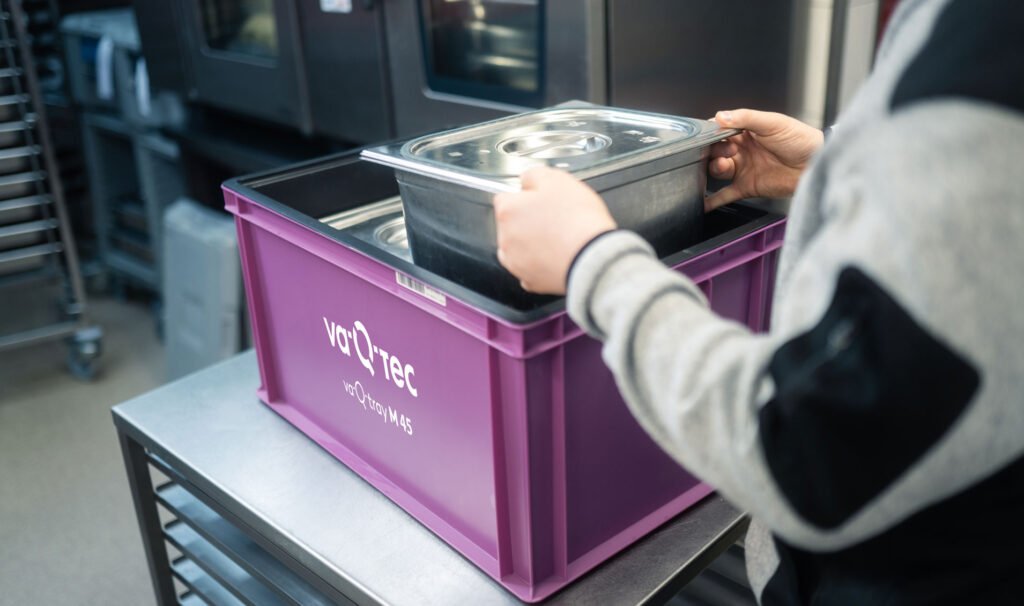
Vacuum-insulated boxes and integrated ice packs render refrigerated vehicles obsolete
The online trade with food products is under high cost pressure and, for this reason, bets on highly insulated transportation boxes. The transport totes from va-Q-tec work according to the principle of the thermos bottle and combine ultra-thin Vacuum Insulation Panels (VIPs) with specially developed ice packs (Phase Change Material, PCM). As a result, refrigerated food is safely transported without a refrigerated vehicle or dry ice, thereby lowering operating costs. The ice packs integrated in the lid of the boxes set the temperature to fresh or frozen and keep it constant for up to 48 hours. va-Q-tec Thermal Solutions GmbH, a leading provider of thermal transportation boxes, developed the new transportation boxes specifically for the e-Grocery market. All boxes are robust, easy to clean, and simple to integrate into automated logistics processes.
“Robustness is at the core of our transportation boxes. This enables our customers to save not only costs for energy and transportation, but also save due to the longevity of the boxes. For the implementation in existing delivery processes, we initially start a precise demand analysis with the customer and optimize it as it is being used to further reduce the operating costs,” says Marc Moelter, Head of Sales Food at va-Q-tec.
Purchase or rental option and field-tested
For the e-Grocery market, the transportation boxes are available as standard in two sizes and two designs for fresh or frozen foods. Temperature ranges, refrigeration performance, and sizes can be customized upon demand. The transportation boxes can be purchased or rented.
The Dutch supermarket chain Albert Heijn has been utilizing the transport totes from va-Q-tec for home food deliveries for two years now. It is using roughly 100,000 va-Q-boxes every day. The containers are prepared for the desired temperature range in each case and the previously chilled or frozen foods are simply placed in the box. Delivery vans without trouble-prone and maintenance-intensive refrigeration units and with only one cargo space are then loaded with different temperature-controlled transportation boxes. This enables Albert Heijn to reduce the operating costs for dry ice, energy and transport in the double-digit percentage range. Furthermore, the CO2 emission drops by about 9,000 metric tons of CO2e per year.
Cost-savings up to 65 percent
Compared to conventional transport containers, the new boxes offer a savings potential of up to 65 percent of operating costs for the delivery of frozen food and up to 35 percent of the costs for chilled food. The higher investment costs are overcompensated by lower operating costs. As an alternative, existing standard boxes or baskets can also be retrofitted with VIPs. The additional use of PCMs replaces the dry ice. For this purpose, existing inlays are replaced so that conventional transport containers receive much better insulation. This renders expensive refrigerated vehicles obsolete.
“Our va-Q-boxes stand for sustainability and extreme longevity. They are already proving their worth hundreds of thousands of times a day in food delivery. They are robust, resource-friendly and can be repaired. All of this reduces operating costs and the carbon footprint of deliveries,” according to Marc Moelter.


